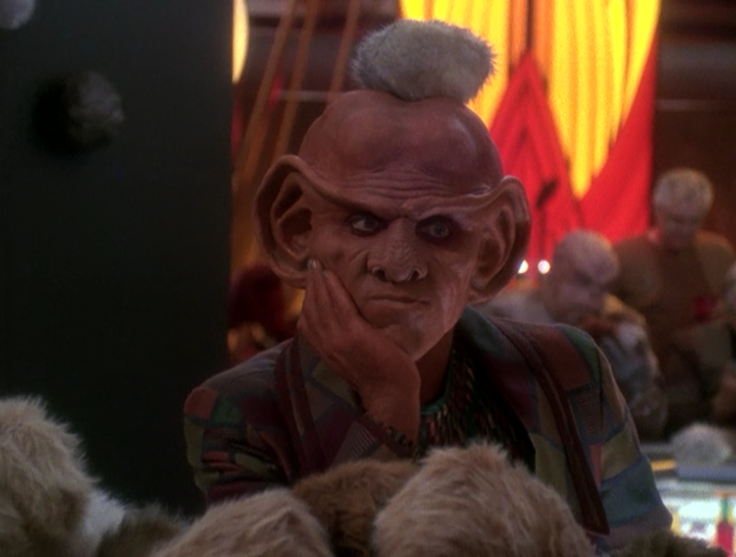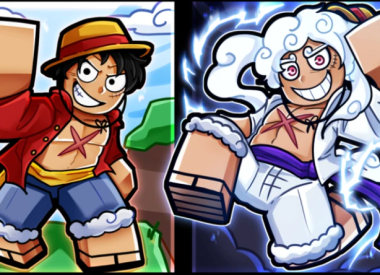As the Sept. 24 premiere of Star Trek: Discovery approaches, Player.One will profile essential episodes to watch for a better understanding of the characters, species and history informing the first Star Trek series in over a decade.
Beyond the production delays, review moratoriums and body-swapping geniuses for hacks, Star Trek: Discovery ’s most fateful decision may have been setting itself in the Star Trek: The Original Series era, making it a major target for pedants, nitpickers and wiki editors the world over. For the continuity-obsessed, Star Trek: Discovery’s altered Klingons, teched-up starships, character retcons (such as giving Spock an adopted sister), redesigned uniforms and other timeline inconsistencies are an obstacle laid in advance against the series’ success. But fan-approved fidelity to the old ways isn’t a hypothetical Star Trek: Discovery must navigate alone. Back in 1996, Star Trek: Deep Space Nine pushed the limits of nostalgia and timeline revisionism in Season 5 episode “Trials and Tribble-ations.”
“Trials and Tribble-ations” opens after the adventure is over, as Temporal Investigations — two agents of the deadpan, wisecracking gumshoe variety — arrive on Deep Space Nine to debrief Captain Benjamin Sisko (Avery Brooks) about the warship USS Defiant’s accidental journey back in time.
The actual time travel is among the least rigorous in the series’ history — some hullabaloo with a Bajoran religious relic — but “Trials and Tribble-ations” isn’t about time travel, it’s about revisiting the original USS Enterprise, combining expert recreations, clever editing and Forrest Gump-ian compositing to insert the DS9 ensemble into the events of Star Trek: The Original Series episode “The Trouble with Tribbles.”
In the original 1967 episode, a Klingon spy surgically altered to appear human, Arne Darvin, tries to poison grain aboard Deep Space Station K-7, only to be thwarted by the Enterprise crew. Now, more than a century later, an elderly Arne Darvin uses the Bajoran Orb of Time to return to the past for revenge, planting a bomb meant for Captain Kirk inside a Tribble (Tribbles will return in DSC).
The crew splits up to find Darvin’s Tribble bomb. Dr. Bashir and Chief Engineer O’Brien get stuck in an Enterprise turbolift. Captain Sisko and Jadzia Dax search the Enterprise corridors, leading to a chance run-in with Kirk and Spock. Constable Odo and Worf watch for Darvin from a table in the space station bar, where Klingons on R&R try and get a rise out of Scotty and Chekov. The episode dodges the change in Klingon appearance since TOS. "It's a long story," Worf says.
Here we see a hyper-charged version of what Star Trek: Discovery is after with its own snug insertion into the original Star Trek timeline. The Deep Space Nine crew — and by proxy, DS9 viewers — get to project 90s values and well-established franchise wisdom back onto its own genesis. This dialogue between the past and the present has a thrill of justice to it, if done right. Dax gets to lust after Spock, not only piercing Kirk’s irresistibility and acknowledging the pop-culture phenomenon of Spock the sex symbol, but figuratively turning the tables on Star Trek ’s original misogyny. The objectifiers have become the objectified.
This same impulse can be found in Star Trek: Discovery, which updates Star Trek’s casting, bringing women to the fore in a chunk of the Star Trek timeline dominated by casual sexism, gender stereotyping and too many yeoman. Racial diversity, pioneered by Nichelle Nichols and George Takei in The Original Series, finds far better parity in Discovery, particularly in its black woman lead, Sonequa Martin-Green. By setting itself in the same approximate timeline as the original Star Trek, Discovery insists the past — both within Star Trek and in the larger social context of the Star Trek franchise — is not inviolate and unquestionable, but living history subject to revision from our decades of new insight.
But not all the reasons behind Star Trek: Discovery’s embrace of the original Star Trek timeline are so clearly in the service of art and common values. Dialogue with the past is a lot more tricky to pull off than empty reminiscence. It’s likely that some elements of Star Trek: Discovery’s timeline overlap will be little more than brand-managed homesickness, resurrecting characters like Harry Mudd purely in search of the past’s warm glow.
This can be found in “Trials and Tribble-ations” as well. But here it’s part of the point. More than anything, “Trials and Tribble-ations” is about the thrill of nostalgia found in acknowledging the patina and gravity of what had once been customary. A whole scene is spent on characters modeling and discussing the old Star Trek uniforms — “I think I’m going to like history,” Bashir says when he sees the miniskirts.
Classic props like tricorders and communicators are affectionately recreated and ogled. “I love classic twenty-third century design. Black finish, silver highlights,” Dax says of her tricorder.
This works wonderfully for Deep Space Nine. As the most daring and inventive Star Trek show, DS9 never had a problem with too much conformity with the past. Its trip into nostalgia is explicitly a tribute to that past. Indulging in the 60s aesthetic is a fun break from the show’s more serious concerns.
An entire show with the same slavish strictures as “Trials and Tribble-ations” would seem absurd, reducing Star Trek to a time capsule bauble, rather than genuine and vibrant sci-fi. Could Star Trek: Discovery have avoided all this simply by setting Star Trek: Discovery in some less well-tread part of the timeline? Doubtful, since Star Trek: The Next Generation and subsequent series explored every possible avenue to wallow in callbacks, cameos and rehashed scenarios anyway. In a fictional universe as limitless as Star Trek, overly nostalgic writers will find their security blanket as assuredly as bold ones find new adventures, regardless of the stardate.
We don’t yet know whether Star Trek: Discovery picked its timeline to interact productively with Star Trek’s past or simply to hide in its safety. Likely a bit of both. But Discovery’s radical aesthetic reinvention isn’t indicative of a problem. Instead, it suggests that careful consideration has been given to mitigating nostalgia and the safety of retro-futurism. The playful indulgences of “Trials and Tribble-ations” would become perils for a new Star Trek show, replacing new avenues of exploration with a fetishized and trivial fidelity.
More Essential Star Trek Episodes To Watch Before Star Trek: Discovery
Star Trek: The Original Series “The Cage,” model for DSC protagonist Michael Burnham.
Star Trek: The Original Series “Errand of Mercy,” our introduction to the Klingons.
Star Trek: The Original Series “Journey to Babel,” the first Sarek episode.
Star Trek: The Next Generation "Sarek" and the decline and death of Spock's father.
Star Trek: The Animated Series "Yesteryear" reveals what life was like for a young Michael Burnham as a human on the planet Vulcan.
Star Trek: The Next Generation "Lower Decks" explores stories and characters away from the bridge.
Star Trek: The Next Generation “Rightful Heir” resurrects Kahless, the most important Klingon religious figure.
Star Trek VI: The Undiscovered Country, the best-yet depiction of Federation-Klingon relations.
Star Trek: Deep Space Nine “Trials and Tribble-ations” explores the limits of nostalgia.
Star Trek: The Original Series "A Private Little War" takes Kirk, Bones and Spock to Vietnam.



















